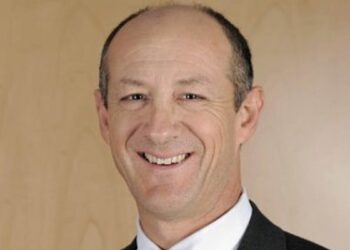Tracey Scotchbrook said in the latest SMSF Adviser Podcast that the regime for the wholesale unsophisticated investor has had several issues wrapped around it for some time.
Scotchbrook said a review in 2011 identified a broad range of concerns around the definition but no outcomes came from that initial consultation.
“Moving forward to the Quality of Advice Review, elements of the wholesale advice piece were included in the terms of reference focusing more on client consent because at the moment there’s no requirement or formal requirement for a client to consent to be moved away from the retail client environment,” she said.
“While that was a small slice of that particular regime, that was something that was seen by the association, and the industry associations more broadly, as being an important improvement to bring into the system. We’d like to see that legislated to make sure clients have got the appropriate disclosures, and that they really understand what it means to be classed as a wholesale and sophisticated investor.”
She said the SMSFA’s recent submission is looking in detail at the wholesale investor regime, financial thresholds, definitions, and whether they’re fit for purpose.
As the thresholds have remained stationary since 2001, with no indexation to account for inflation, Scotchbrook said the SMSFA believes it is an important first step that the principal place of residence be removed from the asset threshold, which currently sits at $2.5 million.
“Looking at what the housing market has done, the price of the main residence is now not necessarily indicative of your level of financial education or sophistication which is why we’re keen to see the family home excluded,” she said.
“However, even the fact around whether or not we have a threshold is in itself controversial. We know some stakeholders would like to see the financial threshold removed altogether, and then it comes down to an adviser test.”
Scotchbrook continued there is already a provision within the law that does enable an AFSL to determine whether a client meets the level of educational sophistication to be classified as a wholesale sophisticated investor, but more often than not, what the association have seen is a substantial increase around the threshold test and reliance on accountant’s certificates.
“And this is a real cause for concern on a number of fronts as an accountant’s certificate is not going to be a protection mechanism for an adviser if they hold a certificate, and will not absolve the adviser of any responsibility,” she said.
“AFCA has issued commentary around this as they’ve seen an increase and the reliance on the accountant’s certificate, but the actual placement for the client wasn’t appropriate, so we have a measure already that does allow for a test to sophistication.
“I think from a policy perspective, we look at the protections that are in place for retail clients and it’s a big deal to be moving clients away from AFCA remediation and in worst case scenarios access to the compensation scheme of last resort.”
Another area of concern regarding the wholesale/retail definition is that SMSFs can find themselves stuck between the wholesale and professional investor thresholds, she said.
“This is something that needs to be resolved to provide absolute clarity for the sector and for the advisers working in this space. Previously, our position had been that the $10 million threshold would apply for the asset test to SMSFs,” she said.
“An outflow of the inquiry that happened in 2011 saw ASIC issue a media release – not a formal guidance – that it wouldn’t take any compliance action if an SMSF had been a classed as meeting their tests and the $2.5 million asset test had been applied, so long as it was applied appropriately, but then there’s a lovely catch-all which says that it wouldn’t preclude someone from taking legal action against an adviser if someone had been incorrectly classed.”
She explained that this anomaly leaves the issue open to challenge and if there is a dispute, someone could challenge on the basis that they were classed as meeting the test, but they have $2.5 million assets where it should have been $10 million.
“This is a significant grey area and it would be terrible for anybody to get caught up in any litigation or dispute around the application of that test,” she said.
“There is an uncertainty in the law and advisers have to try and operate within its framework, but what it does highlight is just some of the complications and uncertainties that do sit in this space for certain groups, such as SMSFs, that do need tidying up.”


